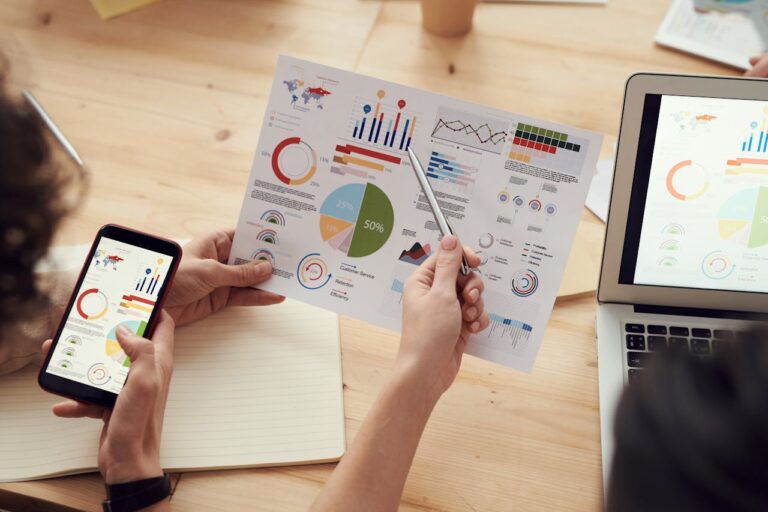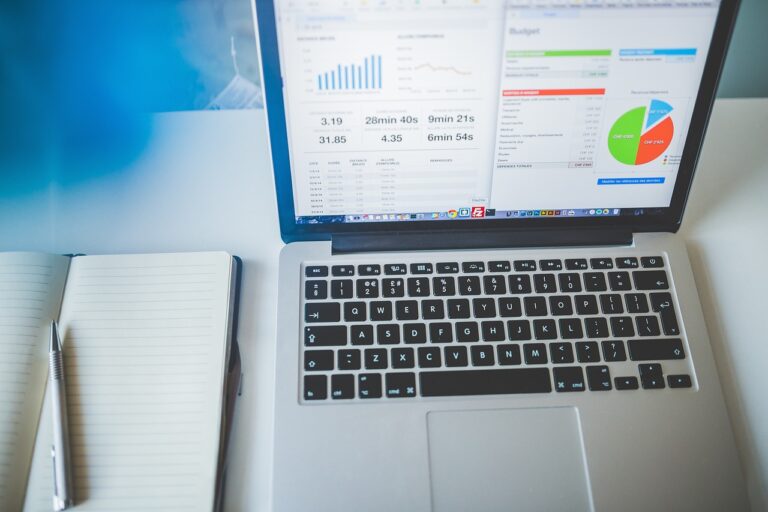Campaign Analytics Guide
In today’s fast-paced digital world, running effective campaigns isn’t enough. To succeed, you need to measure your efforts, analyze data, and derive actionable insights. As a freelance digital marketing expert, I, Priyanshi Shah, understand the significance of campaign analytics in shaping successful marketing strategies. Whether you’re diving into Instagram marketing, social media advertising, or broader digital marketing initiatives, campaign analytics can take your efforts to the next level.
This guide will explore the core metrics, insights, and strategies needed to excel in digital marketing campaign analytics while keeping it simple and actionable.
What is Campaign Analytics?
Campaign analytics involves tracking, measuring, and analyzing data from marketing campaigns to understand their performance. It helps digital marketers identify what’s working and what isn’t, enabling better decision-making.
For example:
- In Instagram marketing, analytics can show which posts generated the most engagement.
- In social media advertising, it reveals how many leads your ad campaigns converted.
Campaign analytics provides clarity and direction, making it indispensable for any digital marketing freelancer or professional.
Importance of Campaign Analytics in Digital Marketing
Without campaign analytics, running a marketing campaign is like driving blindfolded. You can’t optimize results or justify your efforts to clients or stakeholders. Here’s why analytics is crucial:
- Performance Evaluation
It shows how well your campaigns are doing, from website traffic to conversions.
- ROI Calculation
Analytics helps you measure the return on investment (ROI) for campaigns.
- Strategic Adjustments
You can tweak strategies in real time for better results. For instance, if your Instagram marketing campaign isn’t reaching the right audience, you can adjust targeting mid-campaign.
- Client Reporting
As a freelance digital marketing professional, showcasing measurable results builds trust and credibility with clients.
Key Metrics for Campaign Analytics
Understanding which metrics to track is essential for any digital marketing campaign. These metrics provide insights into how well a campaign is performing and guide decisions to improve its outcomes. Here are the key metrics in detail, tailored for Instagram marketing, social media advertising, and other digital strategies:
- Reach and Impressions
- Reach is the number of unique users who see your content.
- Impressions are the total number of times your content is displayed, even if seen multiple times by the same user.
Why They Matter:
- High reach ensures brand visibility among potential customers.
- Impressions help measure the frequency of exposure.
- On Instagram, understanding reach helps tailor content to audiences who are not yet followers.
- Click-Through Rate (CTR)
CTR is the percentage of people who click on a link or ad compared to those who viewed it.
Formula:
CTR = (Total Clicks ÷ Total Impressions) × 100
Why It Matters:
- A higher CTR means your content or ad is engaging and relevant.
- In social media advertising, CTR highlights whether your call-to-action (CTA) resonates with the audience.
- Engagement Rate
Engagement rate measures likes, comments, shares, and other interactions on your content.
Why It Matters:
- High engagement shows strong audience interest.
- Platforms like Instagram prioritize content with better engagement, improving organic reach.
- Conversion Rate
This metric tracks the percentage of users who complete a desired action, like purchasing, signing up, or downloading content.
Why It Matters:
- Conversion rate directly impacts revenue.
- It indicates how effectively your campaign motivates users to take action.
- Cost Per Click (CPC)
CPC is the amount you pay for each click on your ad.
Why It Matters:
- Helps manage advertising budgets.
- Low CPC with high CTR indicates a cost-effective campaign.
- Customer Lifetime Value (CLV)
CLV estimates the total revenue a customer will generate over their relationship with your brand.
Why It Matters:
- Focuses on long-term customer retention.
- Justifies higher upfront acquisition costs for loyal customers.
- Bounce Rate
Bounce rate shows the percentage of visitors who leave a website without interacting further.
Why It Matters:
- High bounce rates may indicate irrelevant content or poor user experience.
- Optimizing landing pages can improve conversions.
- Return on Investment (ROI)
ROI measures the profitability of your campaign.
Formula:
ROI = (Net Profit ÷ Campaign Cost) × 100
Why It Matters:
- ROI demonstrates the financial success of a campaign.
- It helps justify spending on digital marketing.
The right tools simplify campaign analytics by automating data collection, visualization, and interpretation. Here’s a closer look at some essential tools for digital marketers:
A staple for tracking website performance, Google Analytics offers insights into user behaviour, traffic sources, and conversion paths.
Features:
- Real-time data tracking.
- Customizable dashboards.
- Integration with Google Ads for holistic campaign analysis.
- Instagram Insights
Specifically designed for Instagram marketing, this tool provides analytics for posts, stories, reels, and ads.
Features:
- Metrics on reach, impressions, and engagement.
- Follower demographics and activity times.
- Story-specific insights to measure interactions like clicks and swipes.
- Facebook Ads Manager
Facebook Ads Manager is ideal for creating, managing, and analyzing paid campaigns across Facebook and Instagram.
Features:
- Detailed ad performance metrics (CTR, CPC, ROI).
- Audience segmentation tools.
- Budget optimization recommendations.
- Hootsuite and Buffer
These tools help manage multiple social media accounts while providing analytics for posts and campaigns.
Features:
- Scheduling and automation of posts.
- Engagement metrics tracking.
- Performance comparisons across platforms.
- SEMrush and Ahrefs
SEO-focused tools that also offer analytics for paid campaigns and website traffic.
Features:
- Keyword performance tracking.
- Competitor analysis.
- Integration with Google Analytics for enhanced insights.
- Data Studio (Google Looker Studio)
This free tool from Google allows marketers to create custom reports and dashboards.
Features:
- Combines data from multiple sources like Google Ads, Analytics, and YouTube.
- Visualizations to simplify complex data.
- Sharable reports for easy collaboration.
- Hotjar
Hotjar focuses on user behavior on websites, providing insights into what’s working and what’s not.
Features:
- Heatmaps to track user interaction.
- Visitor session recordings.
- Feedback collection through surveys and polls.

Turning Data into Insights
Collecting data is only half the battle. To create impactful campaigns, you need to turn raw data into actionable insights. Here’s how to approach this process effectively:
- Define Objectives
Start by clarifying what you want to achieve with your campaign analytics. For example:
- Increase engagement on Instagram marketing by 15%.
- Reduce CPC in social media advertising by 10%.
- Focus on Relevant Metrics
Avoid being overwhelmed by data. Identify key performance indicators (KPIs) that align with your goals.
- Look for Trends and Patterns
Analyze data for recurring trends. For instance:
- Are carousel posts generating more clicks than single-image posts on Instagram?
- Is video content driving higher engagement than text posts?
- Segment Your Audience
Divide your audience based on demographics, interests, and behaviors. This allows for more targeted campaigns.
- Utilize Visualizations
Use graphs, charts, and dashboards to simplify complex data. Tools like Google Data Studio make this process easier.
- Test and Iterate
Run A/B tests to determine what works best. For example:
- Test different CTAs in Instagram ads to see which drives more clicks.
- Experiment with ad formats like stories vs. reels.
- Collaborate with Clients or Teams
Share insights in a simplified format with clients or team members. Transparency builds trust and ensures alignment on goals.
- Take Action
Insights are only valuable if they lead to action. For example:
- If analytics show low engagement during specific hours, adjust your posting schedule.
- If certain hashtags perform better, use them consistently in your Instagram marketing.
- Review and Optimize
Regularly revisit your data and adapt your strategies based on changing trends and audience behaviors.
Challenges in Campaign Analytics
Analyzing campaigns is not without its challenges. Here are a few common hurdles and how to overcome them:
1.Data Overload
Too much data can be overwhelming.
- Solution: Focus on key performance indicators (KPIs)
2. Attribution Issues
It’s often hard to determine which channel drove conversions.
- Solution: Use multi-touch attribution models.
3. Keeping Up with Trends
Platforms and tools constantly evolve.
- Solution: Stay updated through courses, webinars, and industry blogs.

Campaign Analytics Best Practices
In digital marketing, campaign analytics are your compass. They help you navigate through oceans of data, guiding you toward more effective and results-driven strategies. However, achieving the best outcomes requires adhering to certain best practices. Let’s explore these in detail.
- Define Clear and Measurable Goals
One of the biggest mistakes digital marketers make is launching campaigns without clear objectives. Goals give you direction and purpose, ensuring your analytics efforts are focused.
- Set SMART Goals: Your goals should be Specific, Measurable, Achievable, Relevant, and Time-bound. For example, “Increase website traffic by 25% in three months.”
- Align Goals with Business Objectives: Ensure your marketing goals tie back to overarching business outcomes like revenue growth or customer acquisition.
- Identify Key Performance Indicators (KPIs)
Not all metrics are created equal. While vanity metrics like follower counts look impressive, they don’t always indicate success. Focus on actionable KPIs that reflect your campaign’s performance.
- For Instagram marketing: Track engagement rate, story views, and follower growth.
- For social media advertising: Focus on click-through rate (CTR), cost per click (CPC), and conversion rate.
- Regularly Monitor Performance
Campaign analytics isn’t a one-and-done task. Regular monitoring helps you identify trends and problems early, allowing for timely adjustments.
- Set Checkpoints: Review data weekly or bi-weekly.
- Use Dashboards: Platforms like Google Analytics and Instagram Insights provide dashboards to visualize performance metrics easily.
- Leverage A/B Testing
Experimentation is key to improvement. A/B testing lets you compare two versions of an ad or content to see which performs better.
- What to Test: Headlines, visuals, call-to-action (CTA) buttons, or audience targeting.
- Optimize for Success: Choose the version that drives higher engagement or conversions.
- Simplify Data Presentation
Analytics can be complex, but presenting them in a digestible way is crucial, especially when reporting to clients or stakeholders.
- Use Visuals: Charts, graphs, and heatmaps make data easier to understand.
- Highlight Insights: Focus on what the numbers mean rather than just showing the data.
- Avoid Data Overload
It’s tempting to track every available metric, but too much data can lead to analysis paralysis.
- Focus on Relevant Metrics: For instance, if you’re running a lead-generation campaign, prioritize lead metrics over engagement metrics.
- Use Filters: Segment data by audience type, location, or platform to make it more actionable.
- Act on Insights
Insights are only valuable if they lead to action. Once you identify trends or areas for improvement, implement changes immediately.
- Example: If Instagram analytics show reels perform better than posts, shift your content strategy to prioritize reels.
- Iterative Approach: Treat every campaign as a learning opportunity to refine future strategies.
- Stay Updated on Tools and Trends
The digital landscape is constantly evolving. Staying informed about new tools and trends ensures your campaign analytics remain cutting-edge.
- Explore AI Tools: AI-driven analytics tools can offer predictive insights and automate reporting.
- Continuous Learning: Attend webinars or read blogs to keep up with the latest industry updates.
Leveraging Campaign Analytics for Instagram Marketing
Instagram has become one of the most powerful platforms for social media marketing, thanks to its visual appeal and massive user base. However, running successful campaigns on Instagram requires a data-driven approach. Campaign analytics play a pivotal role in optimizing your Instagram marketing strategy.
- Understanding Instagram Analytics Tools
Instagram offers built-in analytics tools, such as Instagram Insights, which provide valuable data on your posts, stories, reels, and audience.
- Accessing Insights: For business or creator accounts, go to the “Insights” tab in the app.
- Key Metrics to Track:
- Engagement: Likes, comments, shares, and saves.
- Reach: Number of unique accounts that see your content.
- Audience Growth: Follower count changes over time.
- Use Data to Refine Content Strategy
Content is king on Instagram, and analytics help you understand what resonates with your audience.
- Analyze Top-Performing Content: Identify which posts, reels, or stories generated the most engagement. Replicate similar formats or themes.
- Experiment with Formats: If data shows reels drive more reach than carousel posts, shift focus to reels.
- Optimize Hashtag Strategy
Hashtags are crucial for visibility on Instagram. Use analytics to refine your hashtag game.
- Track Hashtag Performance: Check how many impressions each hashtag generates.
- Use Niche Hashtags: Niche hashtags often perform better for specific target audiences.
- Leverage Story and Reel Insights
Instagram stories and reels are excellent for engaging audiences, and their analytics provide actionable insights.
- Story Insights: Track completion rates to see if users watch your stories till the end.
- Reel Metrics: Look at play counts and watch time to gauge interest.
- Target the Right Audience
Campaign analytics help ensure your content reaches the right people.
- Use Demographics Data: Insights show follower age, gender, and location. Tailor your content accordingly.
- Refine Ad Targeting: For social media advertising, monitor audience behavior to optimize targeting parameters.
- Monitor Ad Performance
If you’re running Instagram ads, campaign analytics are indispensable for maximizing ROI.
- CTR and CPC: High click-through rates and low cost per click indicate effective ads.
- Conversion Tracking: Use Instagram’s ad manager to track actions like purchases or sign-ups.
- Post at Optimal Times
Analytics show when your followers are most active. Use this data to schedule posts for maximum engagement.

Future of Campaign Analytics in Digital Marketing
The field of campaign analytics is rapidly evolving, driven by advancements in technology and shifts in consumer behavior. Here’s what the future holds for digital marketing campaign analytics:
- Greater Role of AI and Machine Learning
Artificial intelligence (AI) will revolutionize how data is analyzed and interpreted.
- Predictive Analytics: AI will predict campaign outcomes based on past data, helping marketers make informed decisions.
- Automation: AI tools will automate repetitive tasks like reporting and data segmentation.
- Enhanced Real-Time Analytics
The future of campaign analytics will focus on real-time data access.
- Immediate Adjustments: Marketers can tweak campaigns instantly based on real-time performance.
- Live Event Tracking: Campaigns tied to live events will benefit from instant feedback loops.
- Integration of Multiple Channels
As consumers engage across various platforms, integrating analytics across channels will become essential.
- Unified Dashboards: Tools will combine data from Instagram, Facebook, email marketing, and more into a single dashboard.
- Cross-Channel Insights: Marketers can understand the customer journey holistically.
- Focus on Privacy-First Analytics
With increasing data privacy regulations, marketers will shift toward privacy-first analytics.
- First-Party Data Collection: Building direct relationships with customers through surveys and sign-ups will gain importance.
- Ethical Data Use: Transparency in how data is collected and used will become a priority.
- Interactive and Visual Reporting
Future tools will emphasize user-friendly and visually appealing reporting methods.
- Dynamic Dashboards: Marketers can interact with data visually, making insights more accessible.
- Storytelling with Data: Insights will be presented in ways that are easy to understand and actionable.
- Personalization at Scale
Campaign analytics will enable hyper-personalization, tailoring content for individual users.
- AI-Powered Personalization: Deliver content based on user preferences, behavior, and demographics.
- Improved Customer Experiences: Personalized campaigns will enhance user satisfaction and loyalty.
- Gamification of Campaign Analytics
To make analytics more engaging, tools may adopt gamification techniques.
- Leaderboards: Track campaign performance in a competitive format.
- Achievement Badges: Earn recognition for meeting milestones, motivating marketers to achieve better results.
FAQ'S
Consider factors like your budget, the complexity of your campaigns, integration options, and ease of use. Tools like Google Analytics or SEMrush are popular choices.
Real-time analytics provides live data during a campaign, while historical analytics reviews past campaign performance to guide future strategies.
A/B testing compares two versions of a campaign to determine which performs better, providing actionable insights to enhance future campaigns.
Social media analytics tracks engagement, reach, and conversions from platforms like Instagram, providing insights for optimization.
Popular tools include Google Analytics, HubSpot, Hootsuite, and Adobe Analytics.
